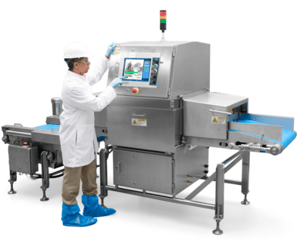 Ever-increasing consumer and regulatory demands have led to the increased pressure on food manufacturers to implement methods of food inspection that are reliable to ensure product quality and safety. X-ray inspection helps in detecting physical contaminants and in studying internal food structures for quality purposes.
Ever-increasing consumer and regulatory demands have led to the increased pressure on food manufacturers to implement methods of food inspection that are reliable to ensure product quality and safety. X-ray inspection helps in detecting physical contaminants and in studying internal food structures for quality purposes.
Why Should You Use X-ray Equipment to Inspect Products?
Pharmaceutical and food manufacturers have adopted the use of x-ray inspection technology to ensure product quality and safety. According to Eagle's Product Inspection, x-ray inspection technology provides high levels of detection for ferrous and non-ferrous metals (including stainless steel).
This technology is also good for the detection of dense foreign materials, for instance, mineral stones, glass, high-density rubber and plastic compounds, and calcified bone. Other than detection of contaminants, you can use your x-ray inspection system to do more than just packaging. X-ray systems also perform several in-line quality checks simultaneously, for instance:
- Fill level inspection
- Width, length, volume, and area measurement
- Detecting any damaged products
- Head space
- Seal inspection
- Detecting missing products
Fill Level Inspection
Pharmaceutical and food manufacturers face a common challenge of maintaining correct fill levels of their products. Over and underfills affect consumer satisfaction and manufacturing costs. Checking correct fill level by using x-ray inspection equipment is done using a simple 2D imaging check and involves setting minimum and maximum fill levels. This allows for the automatic rejection of products that are outside these set levels.
Mass or what the product is made of doesn’t matter. The product has to reach the set height within the container or pack. X-ray inspection systems can help you by ensuring that you remain compliant with the set regulations. Manufacturers of beverage and liquid food products, for instance, yogurt drinks can benefit immensely.
Width, Length, Volume, and Area Measurement
X-ray inspection equipment captures x-ray greyscale images and the darker the grey image, the more products on the x-ray beam path. When you convert the grey tones using software into 3D images, the software can calculate the exact area of the product. By using this type of image analysis, you can easily be able to identify products that are too short, long or not wide enough even if they may have the same weight, are positioned correctly, and are free from contaminants.
Detecting Damaged Products
Damaged products are detected using similar principles used in volume and length measurement. By setting the minimum and maximum sizes for product or pack height, width, surface area, or volume, the x-ray inspection software will spot a deformed product.
Head Space
The head space of packaged products is usually applicable where the products are packed in containers and where the distance between the top of the container and the surface is measured. Headspace is important in maintaining product freshness as well as for pasteurization and sterility of the product. X-ray inspection equipment with a head space tool will automatically allow differences in fill level and variations in the height of the container. This capability ensures that product integrity is maintained at the required levels.
Seal Inspection
The reliability of product seals is important in quality control for manufacturers. The sterility, safety, and freshness of pharmaceutical packs and sealed food products often depend on the seals. However, these seals can easily be compromised by contaminants or straying particles of the packaged products.
An x-ray inspection system is an ideal solution for you and can help in detecting stray particles. The x-ray inspection equipment has a unique ultra-high contrast detector that you can use to check the seal area, and it can identify particles that are as small as 1mm that may be caught in the seal area. The x-ray inspection system can also detect contaminants simultaneously.
Detecting Missing Products
Your x-ray system will also look at the inside of the sealed packaging to ensure that all the components are present. It is also able to count components and products that cannot be counted or seen by cameras or by the human eye. For instance, it can count syringes and needles in a box, ensure that the locking lever in the packaged asthma inhaler is present, count pralines in a gift box or cheese cubes in a tray.
Although you are not required to use x-ray inspection systems, some guidelines by GFSI (Global Food Safety Initiative), GMP (Good Manufacturing Practice), and HACCP (Hazard Analysis and Critical Control Points, as well as other ad hoc standards that have been set by the retailers, emphasize that manufacturers should establish product inspection programs that are reliable.
Incorporating an x-ray inspection system into your company’s inspection program will ensure product quality and safety, and also help you to comply with both national and international regulations, local standards and legislations set by retailer. In this way, x-ray product inspection helps manufacturers go beyond packaging inspection to provide a robust quality and safety assurance solution.




